I bought my first Japanese tool in the late 1970s shortly after I started building boats. It was a kataba saw that I had purchased at Toshiro’s Hardware in Seattle’s International District. The store’s owner, Frank Toshiro, asked me what kind of woodworking I was doing—I told him boatbuilding—and if I had used Japanese saws before. When I said I hadn’t, he took from the display case a slender saw with a straight stick-like handle and a rectangular fine-toothed blade. He put a piece of 1×2 pine on top of the counter and sawed an inch off the end. I was already impressed by how quickly and cleanly the saw cut, but then he took the piece that he had just sawn off and pressed it back on the end of the 1×2. It stayed there. The two sides of the cut were so smooth that air couldn’t get between the pieces and a partial vacuum held them together. That sold me on the saw and, over the years that followed, I bought more saws, sharpening stones, and my favorite chisel, a Kote Nomi crank-neck with a laminated blade that took a razor-sharp edge.
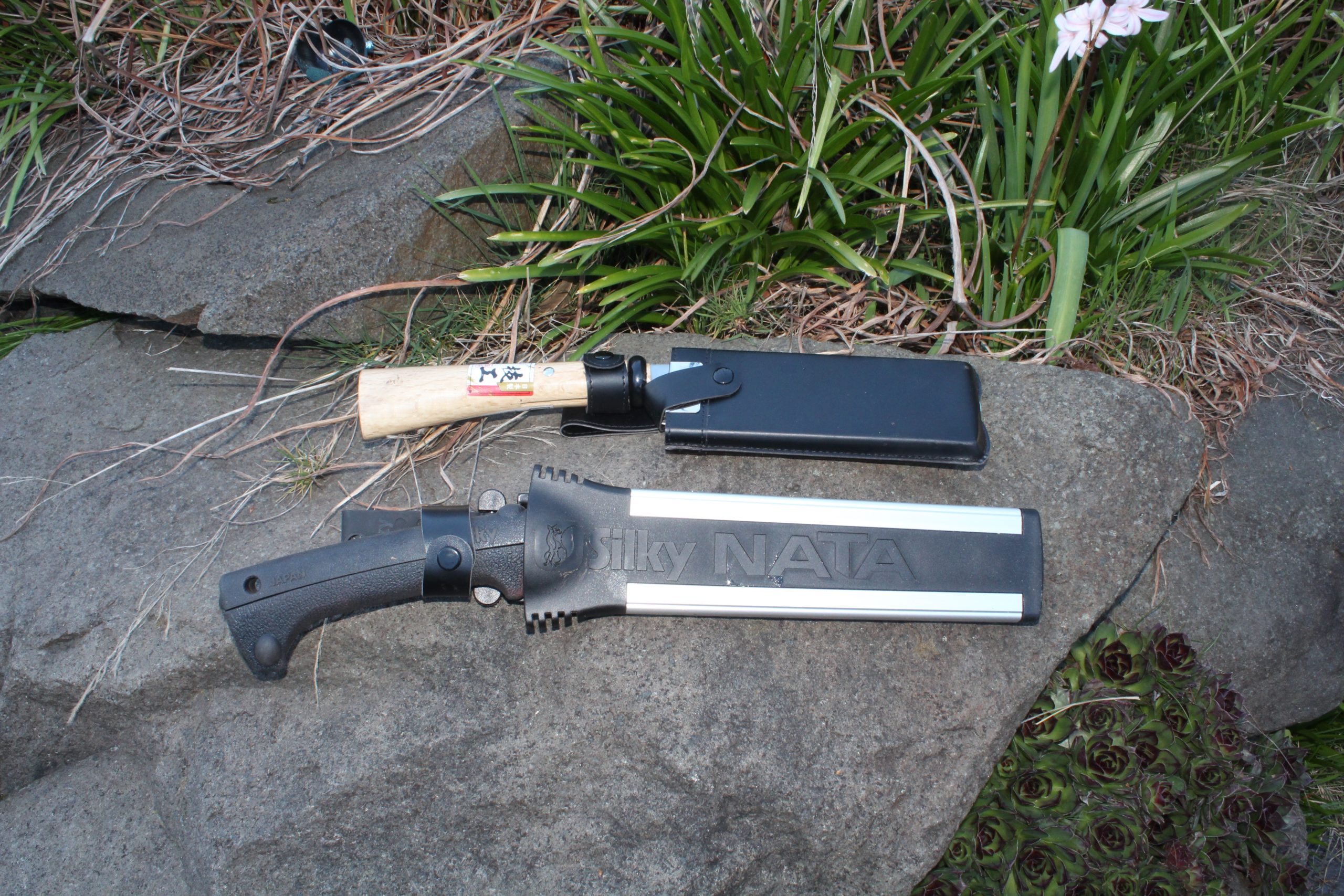 Photographs by the author
Photographs by the authorThe Kakuri sheath (top), made of thin plywood and faux leather, protects the blade well, but is not made as well as the nata. I’d keep it in a backpack to make it last. The Silky sheath is quite sturdy and made of aluminum and tough plastic and will carry the nata in either orientation for left- or right-hand use. The belt loop clips into the back side, so the sheath can be removed without taking the loop off your belt. Both sheaths have a loose fit on the blade and rattle a bit when carried on a belt.
The Japanese tools looked different and often worked in different ways, but they always took very sharp edges and were easy to use. My two most recent purchases have been no exception. They are natas, outdoor tools that look like short machetes but are used as hatchets. I have a 165mm single-bevel nata from Kakuri and a 240mm double-bevel nata from Silky.

Both natas are very sharp and and can quickly whittle feather sticks for fire starting.
The Kakuri nata is made in the traditional form. It has a short tang pinned in a 7″ oak handle; a steel ring around the throat pinches the two parts together. The 165mm (6-1/2″) blade is made of 1/4″ steel, and the tool has an overall length of 14″ and weighs 1 lb 3.6 oz. It has a single bevel for a right-hander. The single bevel is favored by arborists, and used with the flat side next to the trunk when trimming branches. That worked quite well for doing a neat job pruning the pear trees in my yard, though I was interested in the single bevel for using the nata like a drawknife.
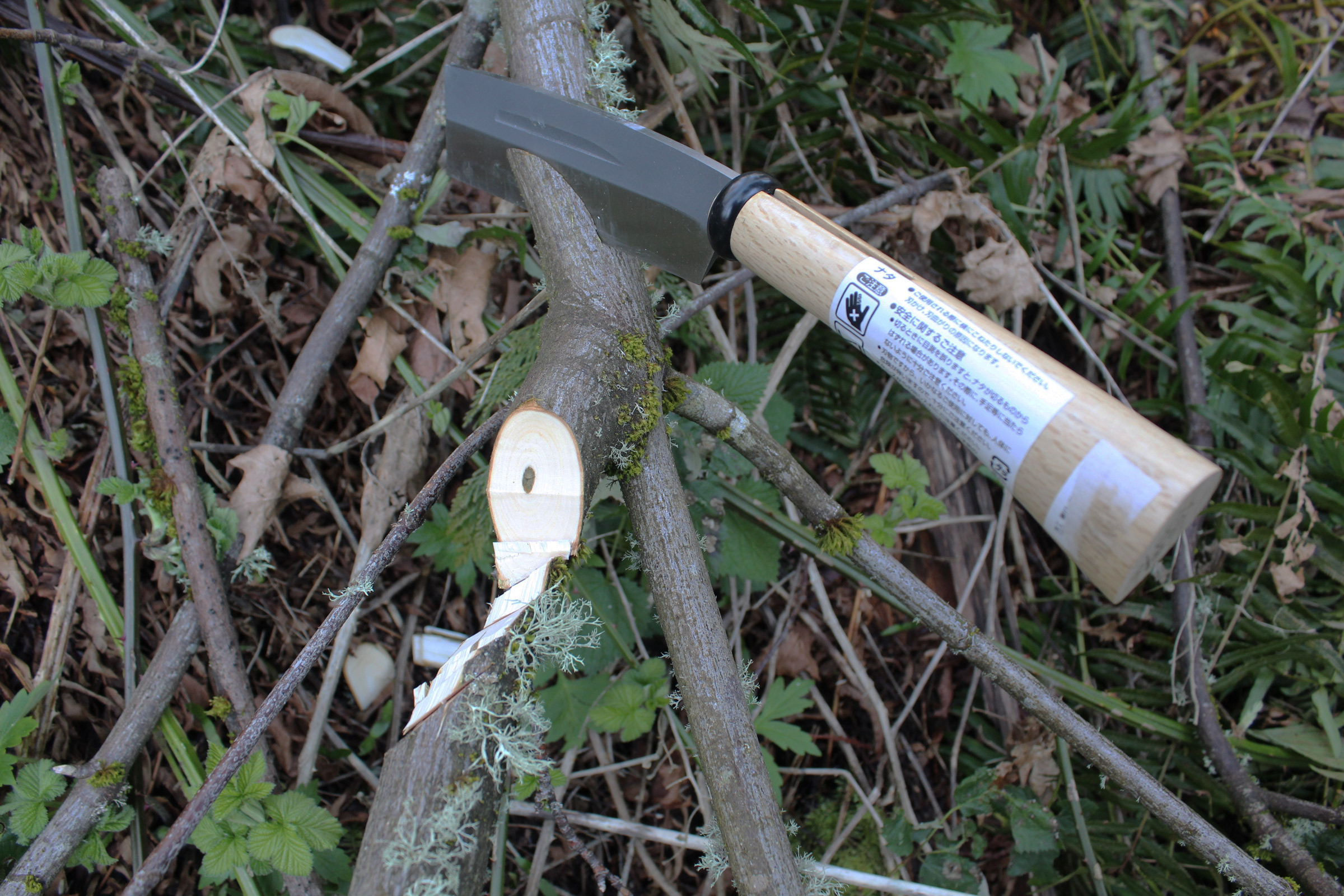
The Kakuri’s very sharp edge and 16-degree bevel make it a remarkably quick chopping tool.
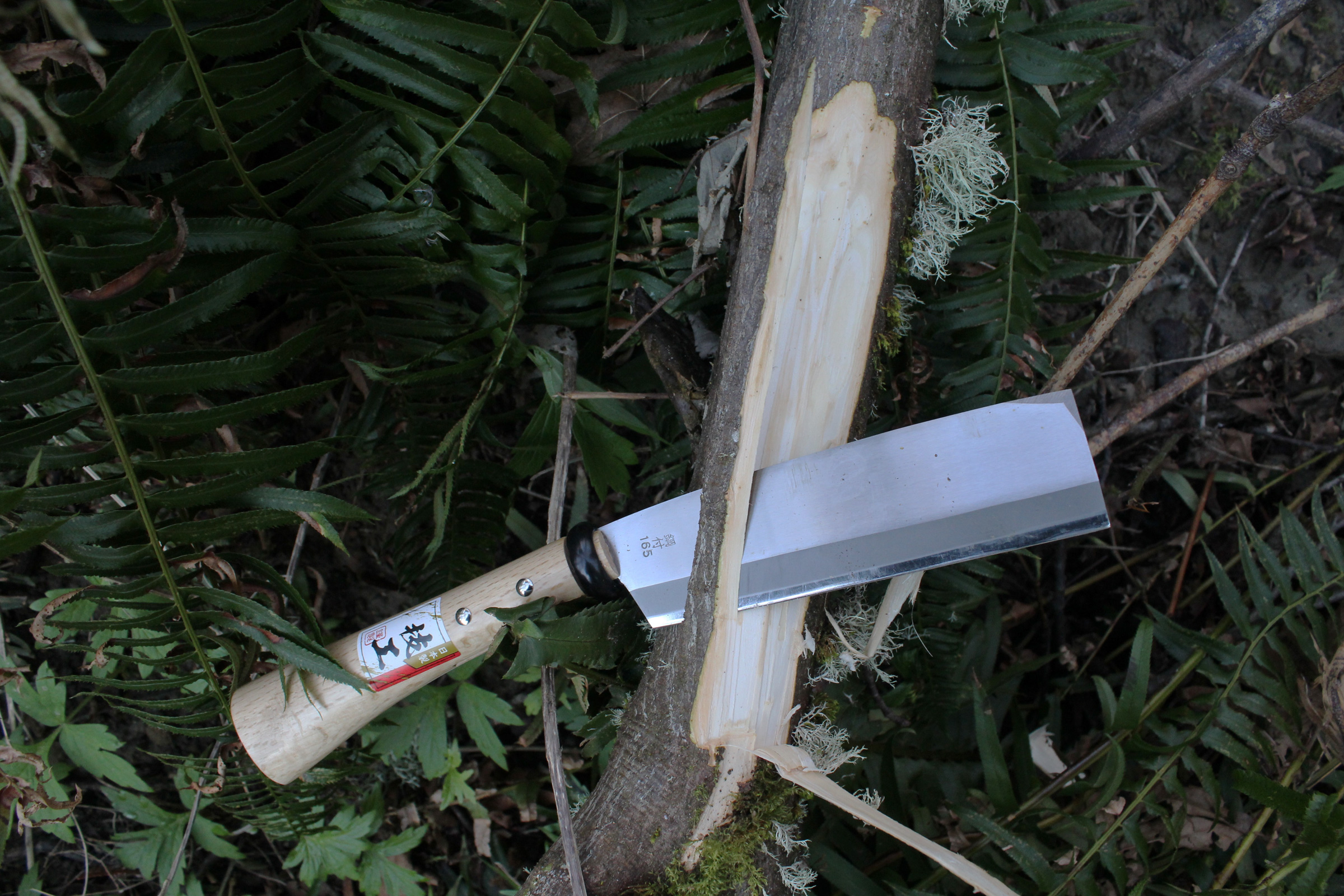
The Kakuri’s single bevel makes it work just like a drawknife, though it requires care when holding the end of the blade.
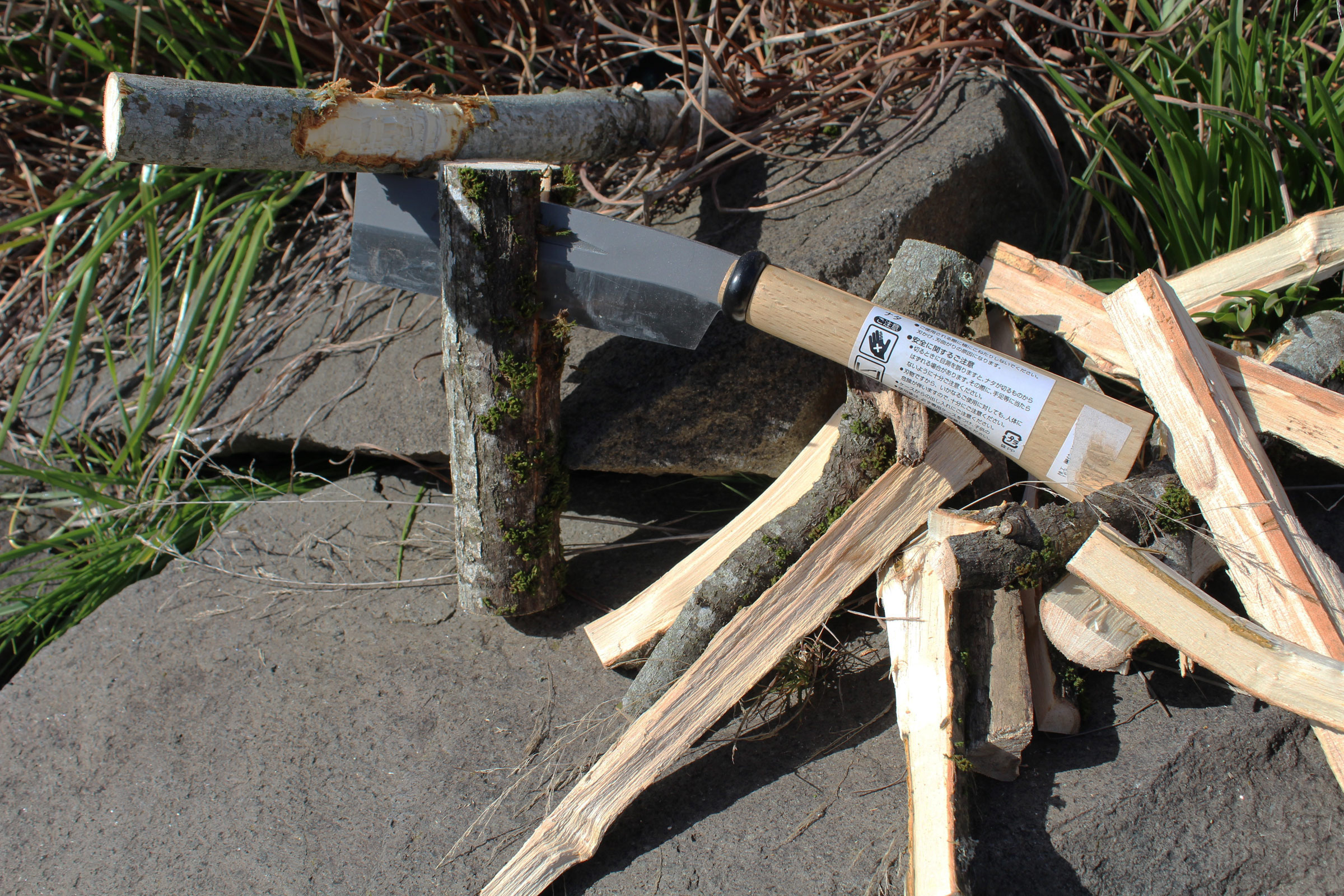
The Kakuri, with its single bevel, can veer a bit when starting a split with a baton, but it quickly works its way into the wood. (The rock isn’t where I did the splitting.)
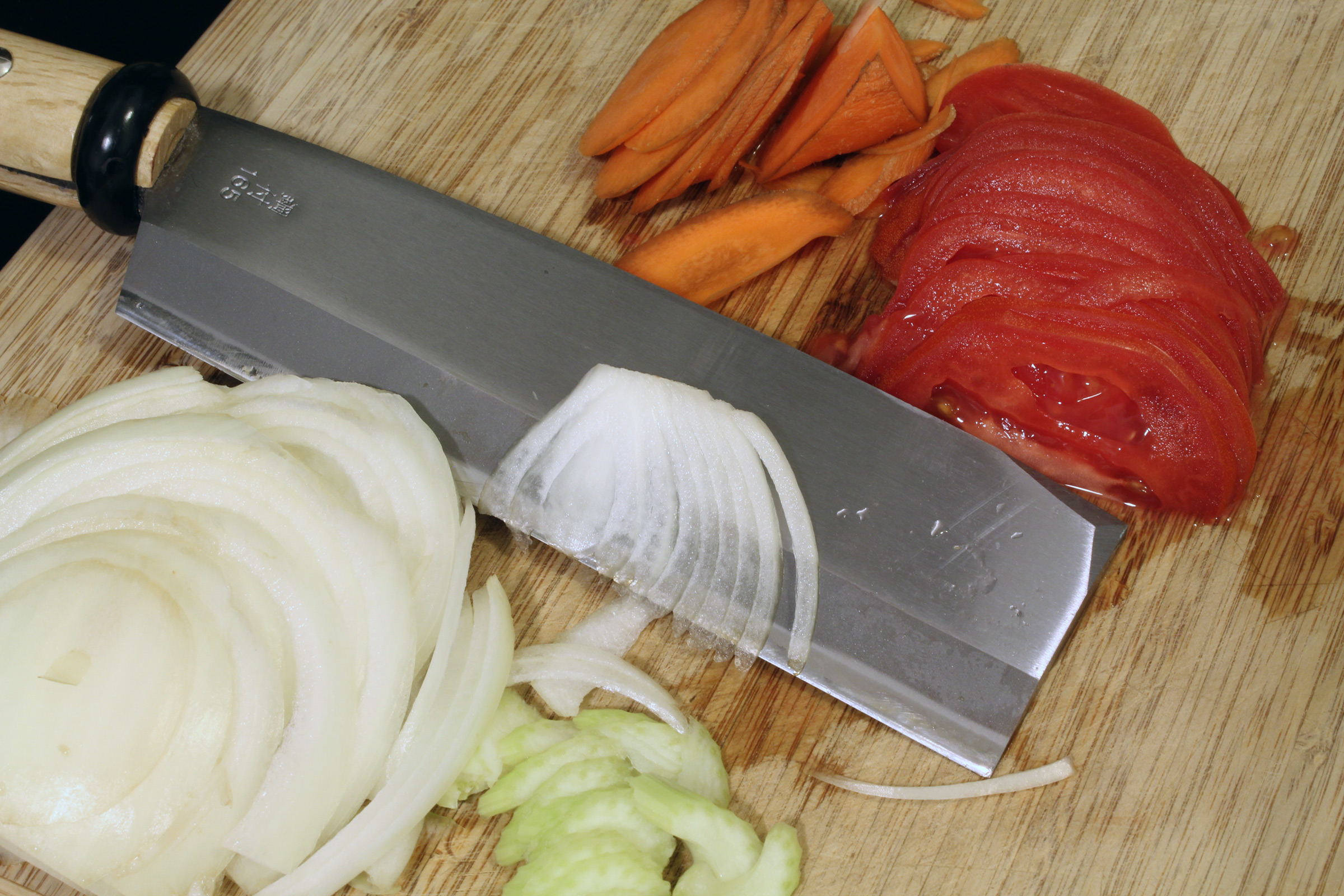
The Kakuri is rather heavy as a galley knife, but its sharp blade does fine work, even with a ripe tomato.
The listing on Amazon, where I bought the Kakuri, says only that the blade is made of “top grade Yasuki steel,” a reference to a city in Japan with a long history of producing steel from local iron sands, steel that was used for traditional Japanese swords. Faint lines on the nata’s blade suggested that it was laminated, with the edge ground into a different piece of steel measuring 1″ wide and 1/16″ thick. The only confirmation of a laminated blade are the characters stamped on the side—鋼付—hagane-tsuke or “with steel,” indicating that the mild-steel body of the blade has a high-grade steel for the edge. That steel can take a very sharp edge and hold it well. The Kakuri nata was quite sharp straight from the manufacturer, and a bit of stropping made it sharp enough to slice through paper held on edge. The steel was durable enough to stay that sharp after doing some chopping and splitting.
Silky’s Nata 240 is a contemporary tool with a 240mm (9-1/2″) blade of 7/32″ SKS-51 steel (listed as stainless but strongly magnetic); the overall length is 16-3/4″ and it weighs 1 lb 9.9 oz. Mine has a double bevel; a single right-hand bevel is available from some outlets, but Silky no longer makes it. The Silky has a full-tang handle with a two-piece rubber grip that is removable so the blade can be replaced without having to purchase a new handle and sheath.
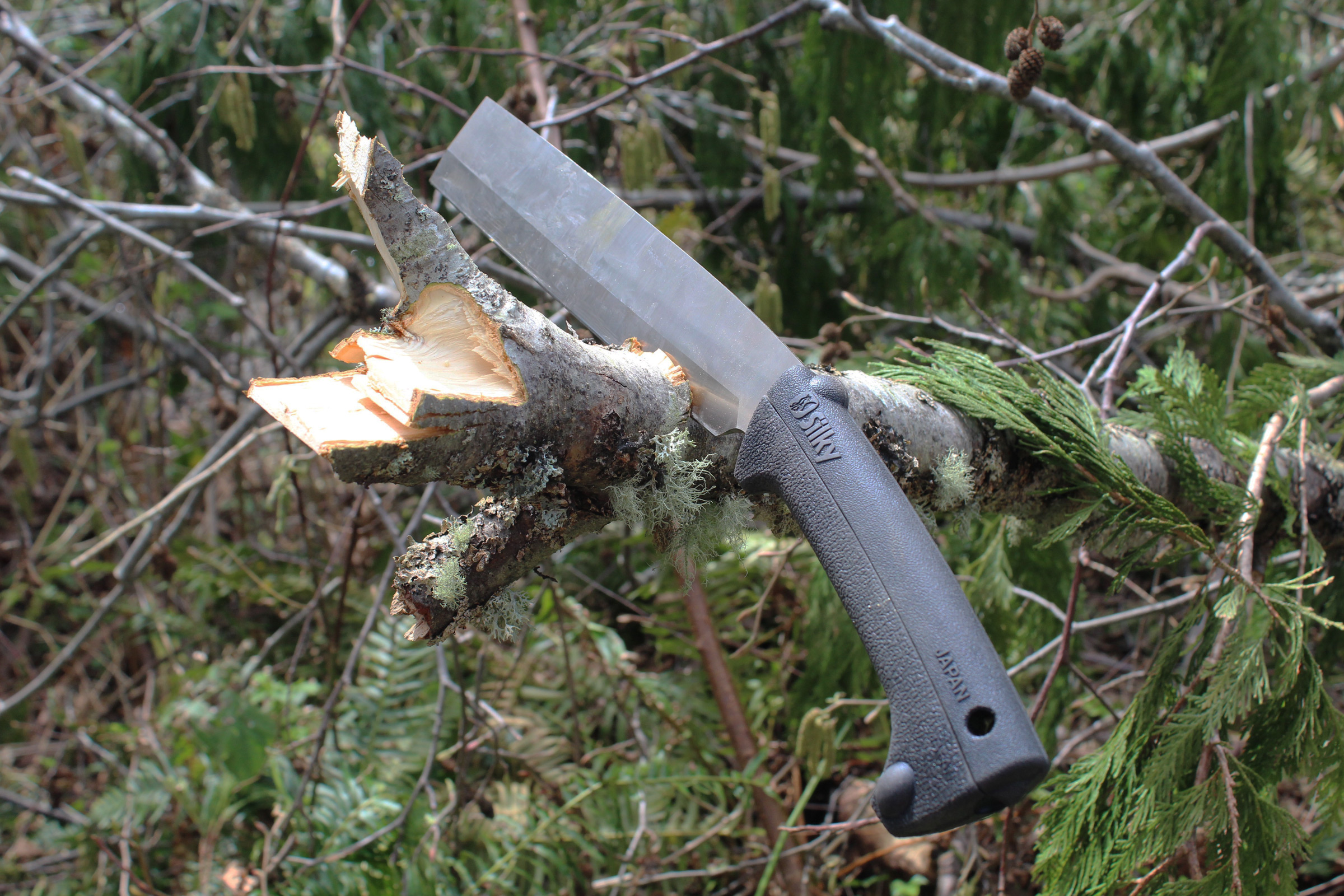
The Silky got through this branch in four strokes. I inadvertently hit the thumb-like branch angled upward and cut through it as if it weren’t there.

The Silky is very effective when used as a drawknife. The large blade makes for a good hand grip on the end and the double bevel provides good control over the cut.

The Silky was especially good for baton-aided splitting. The long blade provides a good target for the baton and the rubber handle all but eliminates the shock to the hand.
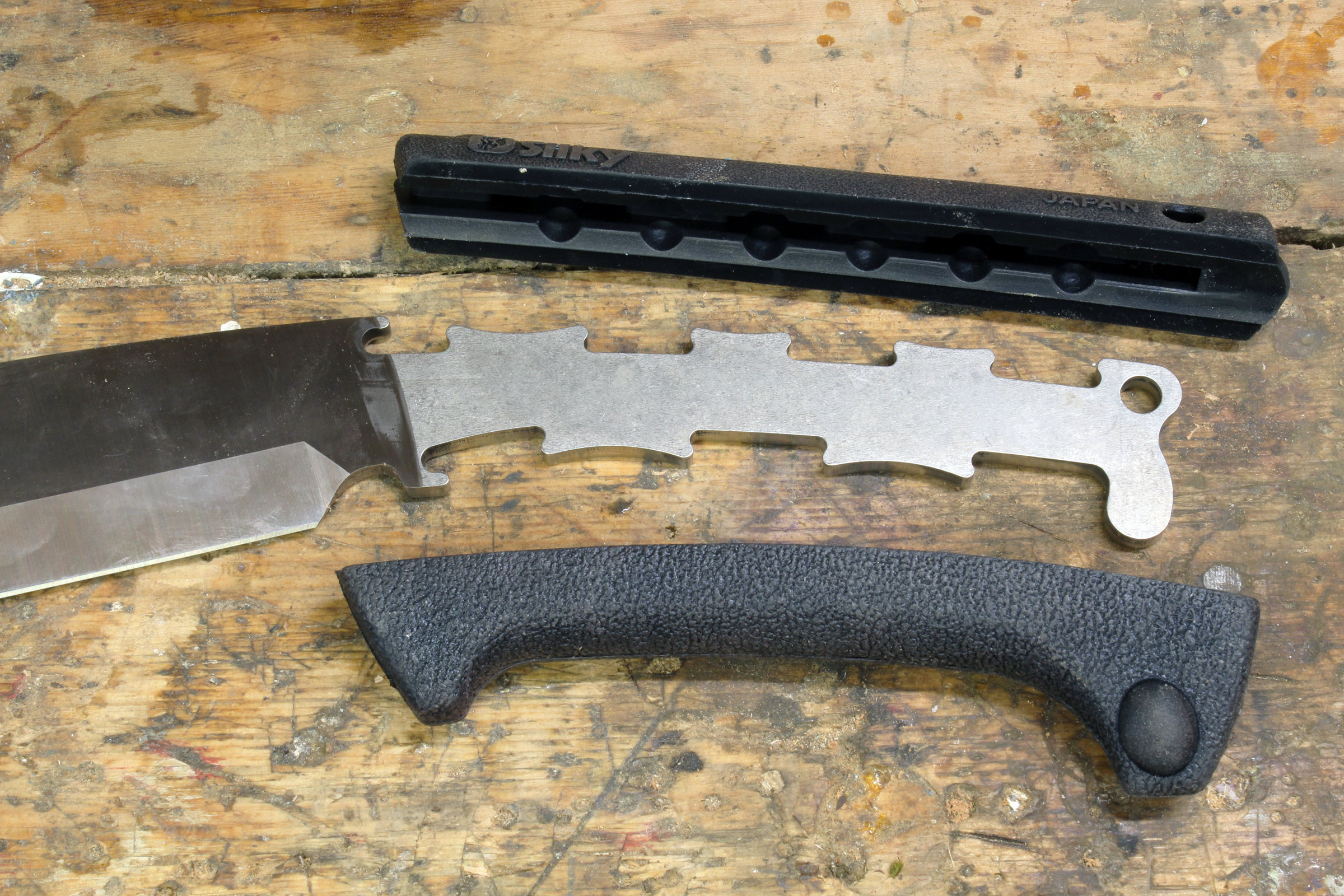
The rubber handle is easily removed if the blade ever needs to be replaced.
The Silky comes with a sharp edge and can be stropped to pass a paper-cutting test. It still was able to cut paper on the edge after doing a bit of chopping and splitting, though not as cleanly.
I took both natas into the woods and used them on some maple and red cedar windfalls. They were impressive chopping tools. On one 2 ½” cedar branch, both got through with four strokes in a matter of seconds. Using the natas in drawknife fashion made it easy to strip bark; the Silky’s double-bevel blade worked just as well as the Kakuri’s single-bevel, whether bevel side up or down.

With a maple windfall as a test piece, I used, from left, the Kakuri and Silky natas, a Gränsfors Bruks hatchet, and a Silky Bigboy saw.
As a chopping test, I put the natas up against my Gränsfors Bruks carving axe on a 3-1/2″ maple windfall. The axe, which weighs 2 lbs 3 oz and has a 4-1/2″ blade, broke through with 30 strokes in 30 seconds. The Silky took 39 strokes and 41 seconds. I wasn’t expecting the Kakuri to measure up to the larger and heavier competition, but it cut through the maple with 34 strokes in 27 seconds. I think the Kakuri’s surprising performance might have been due to its fine 16-degree bevel. Both the Silky and the axe have a slightly blunter 20-degree angle. One of the online reviewers of the Silky nata mentioned that sawing is much more efficient than chopping, so I used my Silky Bigboy folding saw and got through the same piece of maple with 41 strokes in 20 seconds.
For splitting kindling, the natas are again very effective tools. With the long blades you don’t have to be quite so accurate as with the short blade of a hatchet, and both the Silky and the Kakuri have enough weight to make splits in small pieces of wood. For larger or knotty pieces of wood that don’t come apart in a single swing, striking the back of the blade will drive a nata through. An axe may bury itself before the wood splits, and you may have to raise both axe and wood to strike the chopping block to continue. The extra length of the nata can leave the tip of the blade sticking out from the wood, providing a place to strike with a baton to continue driving through.
Both the Kakuri 165 and the Silky Nata 240 are very effective tools for campcraft. And just as I was quick to convert from my western push saws to Japanese pull saws, I’ll make the switch from hatchet to the Japanese nata.![]()
Christopher Cunningham is the editor of Small Boats Magazine.
The Kakuri 165 nata, single bevel, is available from Amazon for $78. for The Silky Nata 240, with double bevel, is available from Amazon for $81.
Is there a product that might be useful for boatbuilding, cruising, or shore-side camping that you’d like us to review? Please email your suggestions.

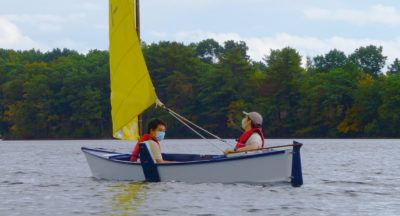
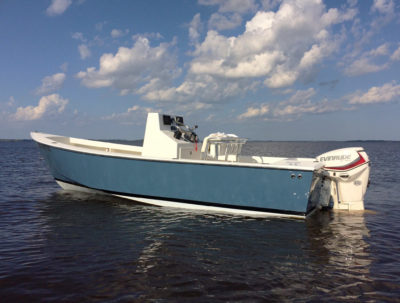
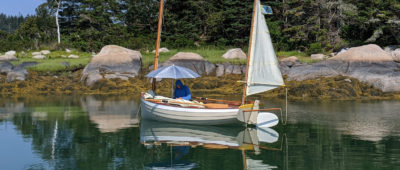
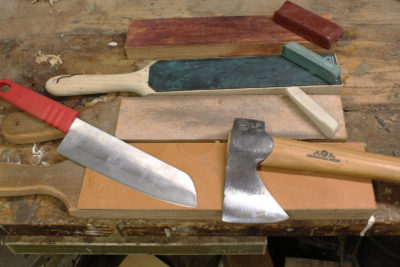
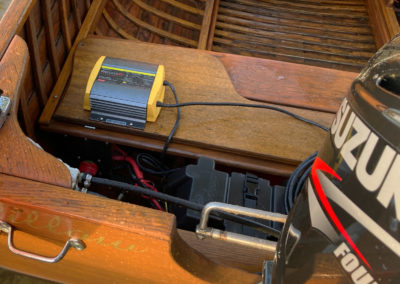
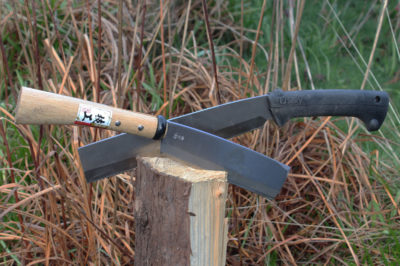
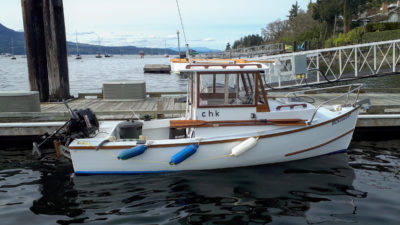

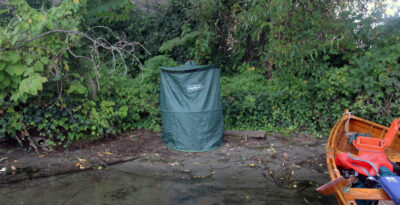

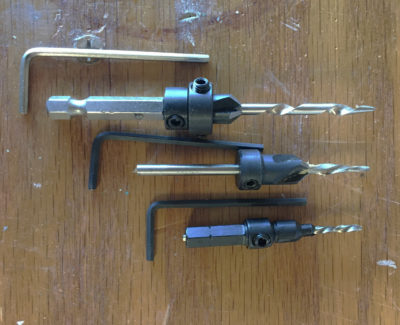
Chris,
FYI – on the Silky’s Nata 240 you say that it is marked stainless, but strongly magnetic. The heat treat hardenable stainless steel family is all magnetic. They are in the martensitic family of alloys. The stainlesses that are non-magnetic are of the austenitic family, e.g. 304 stainless. The addition of nickel makes these non-magnetic, and non-hardenable thermally.
I was once the metallurgist for the largest American stainless steel company, and one of my product lines was the American cutlery industry. It was a very satisfying work being able to optimize the processing and alloy selection at these companies. If ever you or your readers have any questions regarding alloy selection, or how to make and use these many varied alloys, feel free to contact me.
Jim Fischer
Another knife in a similar vein that has seen years of hard use here is the Ontario Knife Spec Plus Chisel Point machete.
It’s only drawback, in my opinion is the saw back, which is almost useless and makes batoning and using as a draw knife less pleasant.
Beyond that, it’s similarly priced and has been a trusted tool for coarse forest management, chopping, splitting and I’ve even set it up as a froe for splitting stringers and shingles with good success.